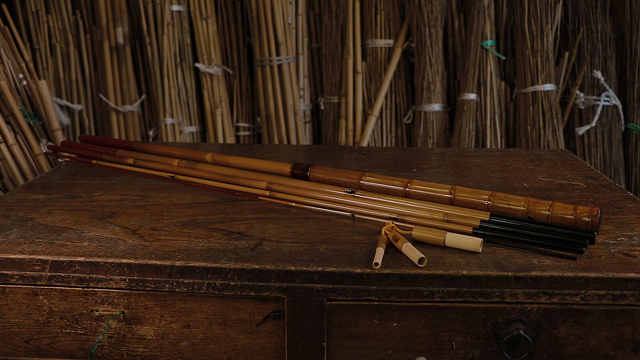Tenkara Rod Choice is Incredibly Personal
But below is my attempt to try to help you find the right tenkara rod for you. I hope that the clickable table of contents helps you navigate to the bits you want to see (let me know in the comments if this is useful)...
How to Choose the Best Tenkara Rod? It’s a really common, but also really difficult question to answer, I hope this article might help you find your way through the maze of available models, lengths, actions, power, recovery and more.
There is no one, universal "Best" tenkara rod; they are all designed for different purposes - sometimes to catch fish and sometimes to catch the angler!
First – a disclaimer. This is written as a no-BS lowdown on useful things I’ve found out about tenkara rods during research done (mainly) for my own benefit. If it’s going to be any use to you, I owe it to you to be direct and honest with you. There is no value to overly hyping something that you later find out to be a waste of space. Equally problematic is the more common example in the small tenkara world of just trying to be much too polite by not mentioning the elephant(s) in the room.
That’s not going to help you decide how to make a good purchase when it comes time to get your new rod. Rest assured, I’ll mention brands who definitely don’t have either me or JP on their “Christmas Card list” (they probably wouldn’t pee on us if we were on fire) – and I’ll still give a favourable description of their rods if they deserve it. At the same time, we obviously have a large slice of self-interest when it comes to our Karasu rods – so I’ll also declare that interest right up front.
Also, when I talk about broad trends in manufacturing across different countries, it is meant as a straight description of factors – not as a “put-down” to anyone who makes different, perfectly valid, choices for their own brand or business. Beyond that, if I’m giving opinions on people, events or products; they are just that – my honest opinion; at least as well as I can express it on the written page. Because my knowledge and opinions may change in response to new info – I’ll keep updating this page to reflect this evolution. That said, let’s dive in:
Tenkara Rod Development
The Bamboo Tenkara Rod
From the Tenkara Lowdown page you’ll already know that the original tenkara professionals used raw, single-piece bamboo stems. In order to gain the advantages offered by longer rods, a relatively long and heavy wooden handle would make a great counterbalance (a point that we’ll spend more time on below!). One fantastic example of that is the rods used by Shigeo Yamada – father of Yamada-san (Kazuyuki Yamada) who currently runs the inn called Shuzanso in Akiyamago. For many decades Shigeo Yamada was renowned as the most skilled Shokuryoshi of the Mount Naeba area.
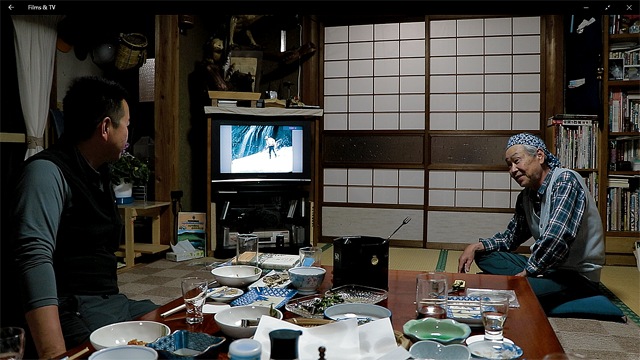
Go Ishii watching Shigeo Yamada footage (snow-camo jacket & bamboo rod!) from the 1970’s with Shigeo's son, Kazuyuki Yamada
The long handle that he owned was carefully stored as part of his fishing equipment. Cleverly, the handle was drilled out to a specific diameter and multiple (single-piece) bamboo rods were cut so that the handle would accept them. That way, multiple spare rods could be stashed at several places around his favourite fishing grounds and – if he ever broke a rod – he would not need to return home to get a hidden replacement and fit it into the socket in the “prize possession” handle to carry on fishing.
People we’ve interviewed (such as Shōichi Saitō and Kazuyuki Yamada) – as well as information from the Omachi Alpine museum – all point to single-piece rods being by far the most common choice for professional Shokuryoshi. But it shouldn’t be a surprise to hear of the practical adaptations of a professional like Bunpei Sonehara who fished the Kurobe river as a Shokuryoshi up until the 1960’s. Sonehara-san apparently formed simple but clever “collar” joints for some of his rods using sheet metal from tin cans. That obviously made them a bit easier to store and transport than the more common single-piece rods. Of course, Sonehara-san fished in the modern era when recycling such cheap sheet metal had become available.
Ironically, one of the very oldest rod-building methods in Japan (the “wazao” tradition), has become the newest form of tenkara rod. The huge amount of effort and detail that goes into producing wazao made them FAR too expensive for Shokuryoshi.
These beautiful, multi-piece, bamboo rods are decorated and preserved with “urushi” (sap from the Toxicodendron vernicifluum tree which has the same active ingredient as poison oak!). Urushi sap cures into a transparent, flexible almost plastic-like protective coating when exposed to moisture. Pigments are sometimes added to make decorative urushi “lacquer” coatings (for instance iron powder to make black urushi). Just don’t get the uncured sap on your skin – unless you enjoy having a raging all-over rash and even potentially fatal complications with your lungs when inhaled (the artisan wazao-makers often start building up a tolerance to it in childhood!). The resulting Wazao cane rods are works of art and take many months to produce. Graphite rods with polyurethane varnish could be seen as making a nod towards this traditional method of protection and decoration.
Although wazao have been produced for centuries for a whole range of fishing methods, it is only because of the very recent birth of tenkara as a hobby (and not a survival technique) that they can now be produced for today’s tenkara addicts. As with any wazao, it is essential that the rod-maker has an excellent understanding of both the fishing method and the fish species in order to produce the perfect rod. Previously, there would have been no reason for a wazao maker (one kind of “shokunin” or artisan craftsman) to learn tenkara. But now, with the understanding of what makes ideal flex, balance and recovery profiles for tenkara – wazao makers such as the phenomenally talented “young rebel” Masayuki Yamano (captured in the video below) can now produce incredible rods for tenkara – as well as fly fishing, spin-casting and dozens of other styles too.
Properly-aged bamboo is the critical starting point of this process. All “imitation” makers (whether within and especially outside Japan) only age their bamboo for a few years. This makes their rods heavier and prone to warping after the heat-tempering and straightening process due to the moisture content. Yamano-san ages his bamboo for AT LEAST ten years before he even considers making a rod with it!
There are eight different kinds of bamboo used in building wazao. Each species of bamboo has its own traits. Typically a wazao would consist of maybe 3 to 5 kinds of bamboo to make the perfect action for a specific style of fishing or target fish. The full eight bamboo varieties are: Hotei-chiku, Ya-dake, Kuro-dake, Ma-dake, Ha-chiku, Suzu-take, Marubushi-dake, Kan-chiku. Every section of the rod would be made using a selected section of stem from bamboo of the perfect species and flex – as well as taper/diameter. You can learn a ton more about wazao and their construction on Yamano-san’s site (English language version coming soon). His work is so interesting that we’re seriously considering making a documentary film about him.
Glass fibre and Graphite Tenkara Rod Evolution
The birth of tenkara as a hobby (with Yamamoto Soseki’s spreading of Dr. Fujimoto’s tenkara skills), soon prompted experimentation with synthetic rod materials. A lot of anglers from that time onwards – especially in the “first generation after Soseki” – had to experiment and make their own equipment. This often meant taking sections from different fishing rods – each designed for a totally different style of angling – and fitting them together to try to get an action that worked for tenkara.
This “Frankenstein” approach to assembling rods from pieces of other rods that just happen to have the right properties for each section of the final rod feels a bit like coming full circle. I say that because it’s a pretty close match to the process of selecting the right piece – of the right species – of bamboo for each of the different sections of a wazao.
Another nice twist to that process is that top modern tenkara anglers often try out entire rods that are designed for other styles of fishing – and fit a handle to them to turn them into experimental tenkara rods. I guess that is a little bit like getting back to a single-piece bamboo rod and fitting your own handle! The notorious Diawa Rinfu was discovered by this process. The Rinfu (now discontinued) was a telescopic, fixed-line rod designed for a Japanese style of bait fishing (or “Myaku-zuri” in Japanese). By chance, when fitted with the right handle, the Rinfu turned into an almost mythically good light-line “honryu” tenkara rod that was feather light at 4.5 m long and capable of casting the infamous #3 nylon level line.
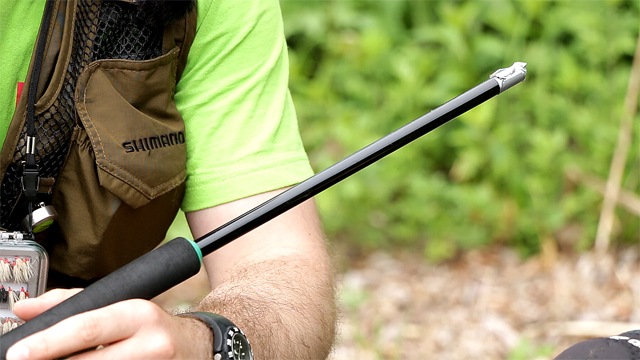
Uberto Calligarich and his prized Custom-handle Rinfu
Of course, as more material was published in books and magazines on the joys of tenkara as a hobby, increasing numbers of dedicated tenkara rods began to be produced by manufacturers in Japan. Absolute top-end brands such as Tenryu and Gamakatsu are notable examples (more on them below!). However, there is also a fantastic story that is almost unknown outside of Japan.
The Mysterious Mr Abe
It’s the story of a craftsman who comes from a line of bamboo rod-makers spanning three centuries…With the advent of graphite, one member of this rod-making dynasty broke away from making bamboo rods to devote his skills to also mastering graphite rod-blank production. The resulting tenkara rods that he developed took on legendary status. His name is Mr. Abe and his graphite blanks, produced in small batches from the family Fishing Shop Called “Nabeya”, created a band of almost cult-like fans. Elite tenkara anglers in the know will still drive a long way across Japan to pick up a Nabeya blank. As an example, the original, small-production-run Oni rods used a blank designed and produced by Nabeya (with handles fitted separately by Masami Sakakibara). I really like that story because of the unbroken family line of rod-makers that span the transition from bamboo to graphite.
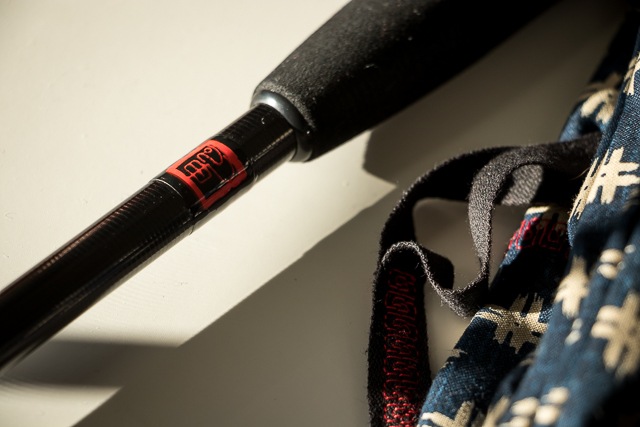
Now that we have crossed that transition point to modern materials, it’s time to look at the expansion of tenkara. Probably the next natural part of that story is the leap of tenkara out of Japan – leading on to a breakdown of some prominent brands…
Characteristics of Tenkara Rod Brands
Coming to America
Tenkara USA
The story of 26-year old Brazilian-born Daniel Galhardo investing what must have been a couple of hundred thousand dollars to set up global distribution warehousing and affordable manufacturing for his own line of tenkara rods is remarkable. That was a hell of a gamble (which also included him quitting his job in international finance). The almost Hollywood-style storyline of Dr Ishigaki just happening to be giving America’s first tenkara demonstration at the Catskills fly fishing centre at this time (and subsequent advice on rods and tenkara mentoring) is also pretty amazing.
The early blog posts from Daniel (before setting up the current TUSA site blog) are brimming full of enthusiasm and fascinating new discoveries from that time– which I expect captured the feeling of that new adventure really well. Like so many other people, my first tenkara rod was the "iwana" made by Tenkara USA. It was Daniel’s ability to spot the opportunity to spread a simplified version of fly fishing – along with attractive elements of Japanese tenkara culture – that has led to the word “tenkara” being familiar around the world.
I think a big key to the success of TUSA exporting tenkara outside Japan lay in sourcing highly scalable and affordable production. In that way, the scare-factor of trying a completely new style of fly fishing was softened by being able to offer attractive prices to new customers. At the same time, spare parts could also be readily supplied without imposing a huge cost to the business.
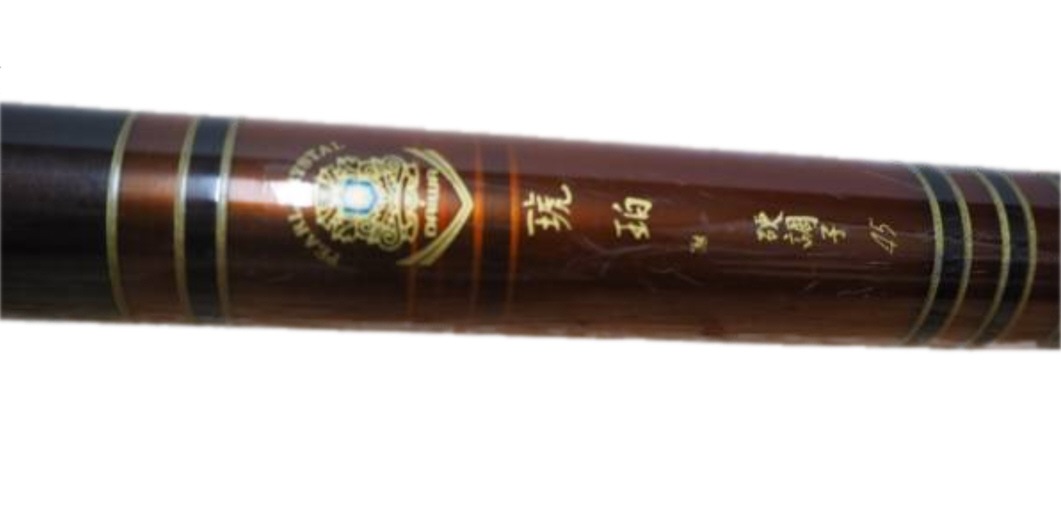
Old Daiwa “Pearl” rod - showing classic Japanese cosmetics; a look which carried through to TUSA's Iwana range
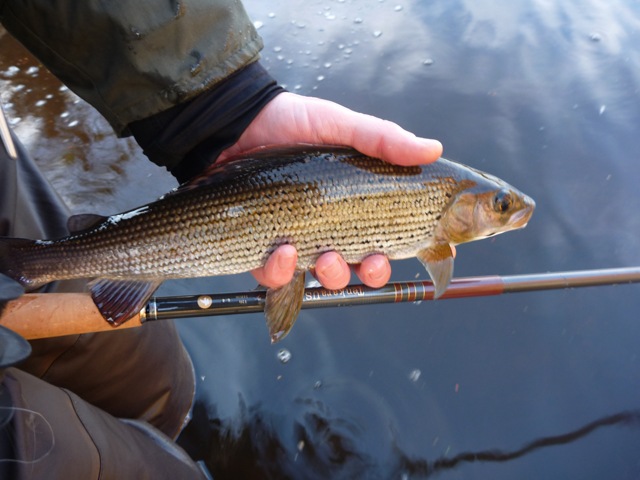
My first ever fish (a grayling) caught using nymph tactics on a TUSA "iwana" rod
TUSA has been built on representing tenkara’s Japanese roots following the “Dr Ishigaki” school of tenkara. The emphasis is on getting people into tenkara and the lack of complication or other barriers to participation. Although manufacture is outsourced to China, the cosmetics and “look” of TUSA rods are often strongly inspired by Japan (e.g. the selection of older Japanese rods pictured here whose influence might be seen in subsequent TUSA offerings). This is in-keeping with a desire to represent tenkara as a Japanese activity and the after sales service they provide is hightly regarded by TUSA customers. The video below shows "fly first" casting techniques while using a TUSA "Sato" rod.
In terms of fishability and casting performance, Tenkara USA rods evolved significantly following Dr Ishigaki’s advice on early models. The flagship Rhodo and Sato rods give many anglers a sound introduction to the sport when staying with fluorocarbon level lines above a #3 on the Japanese scale (with a comfort zone in the #3.5 to #4.5 region).
The difference compared to premium rods would be in the tendency for Rhodo/Sato models to “over-recover”. The tips are slightly stiffer than is ideal; making the rod rebound/recoil at the handle when cast. That also makes it difficult to cast lines lighter than #3 fluorocarbon (but that isn’t of a major concern for newcomers to tenkara). Softer models in the TUSA range tend to struggle more with recovery and have a high degree of “wobble”. Overall, their wide availability and focus on simple first-steps means that TUSA rods will continue to bring lots of people into the sport.
TenkaraBum
As well as accompanying Daniel on an early research trip to Japan, Chris Stewart took a different path than TUSA by setting up TenkaraBum. Instead of investing in competing, large-scale production for a mass market, TenkaraBum began sourcing existing, proven Japanese-made rods and importing them to the USA for sale. His first imported rod for sale was the Daiwa Enshou in 2012.
The tagline “Tenkara is Japanese: Shouldn’t your rod be?” neatly sums up the T-Bum approach.
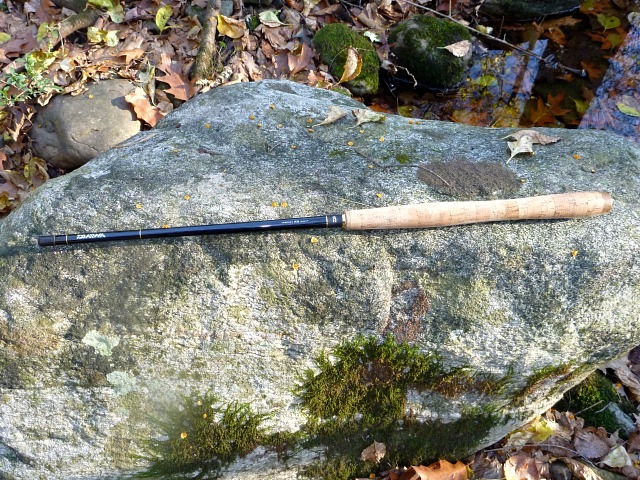
Chris Stewart’s First Imported rod – Diawa Enshou
The performance of exotic T-Bum imports differed from “in-house” rods of TUSA’s startup company by enjoying two big head starts. Namely, both the pool of tenkara knowledge and much longer rod-production experience of Japanese rod manufacturers. Not being tied to one single brand of rod also let Chris cherry-pick from a wide range of models and companies. Because of that, it’s actually not possible to come up with “typical” examples or characteristics for T-Bum rods (other than they are all made in Japan). In recent years, Chris has sourced rods under the T-Bum brand from breakaway Japanese maker “Suntech” (as well as carrying rods from the Japanese Suntech range).
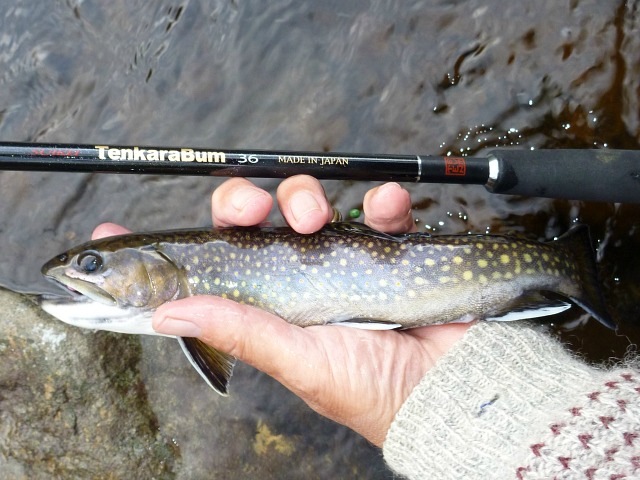
T-Bum 36
TenkaraBum also took part in the launch of our Japanese“Karasu” rods (and carried them for a limited run). So, with the appropriate self-interest declared, Discover Tenkara customer Alan gives his impressions of the Karasu 360 and 400 models here (note that the vast majority of these rods' performance results from the skills of established Japanese experts in both tenkara fishing and tenkara rod manufacture - we just told them what we wanted and they created it perfectly):
Separate info on characteristics and the name can be found on this page: https://www.discovertenkara.com/karasu/
Overall, then, it was the two contrasting approaches of Chris and Daniel that fuelled the global expansion in tenkara (and the rods that folks use to fish it). The mission of Dr Ishigaki to convert 50% of all mountain stream fishers to tenkara is alive and well with TUSA.
Once an angler’s knowledge and skills progress beyond the occasional fishing session (maybe tagged onto a camping, hiking or biking trip), they can stop their interest from stalling by looking to more info on techniques and possibly more refined rods. Our mission at DT is to provide that detailed info on tactics and culture that fuels a life-long passion for tenkara (as well as supplying the best gear that we can find to support your technique).
Since T-Bum/TUSA hit the scene, many more rod brands and sellers have become known to a western audience. As with T-bum/TUSA, they are broadly possible to split into two camps. You either have the existing Japanese brands or you’ve got western brands that utilise one of a small number of manufacturing plants in China. Some interesting exceptions exist – like Shimano producing their rods in China; but the way they do it is to basically transplant an entire Japanese production facility to China. That way, they can reproduce the exact set of processes for both manufacture and quality control (even going so far as to employ Japanese supervisors to oversee production). Because of that setup, the Shimano rods are very much “Japanese-produced”.
Of course, it’s impossible to give a full rundown of every single rod model from every single brand (at least with any meaningful opinion attached). Instead, I’ve tried to outline a selection of prominent brands below (in no particular order) to give a brief flavour based on my own experiences…
Tenryu Tenkara Rod Brand
Longstanding Japanese brand with a reputation for exceptionally high quality blanks under Chairman Miyoshi Shiozawa. Tenryu are active in many forms of fishing – including specialised, ultra-soft tenkara rods that incorporate a precise percentage of glass-fibre in their carbon-fibre cloth to produce a silky-smooth action. I’ve cast their Furaibo TF39 which is a beautiful, soft rod that shines with light level lines.
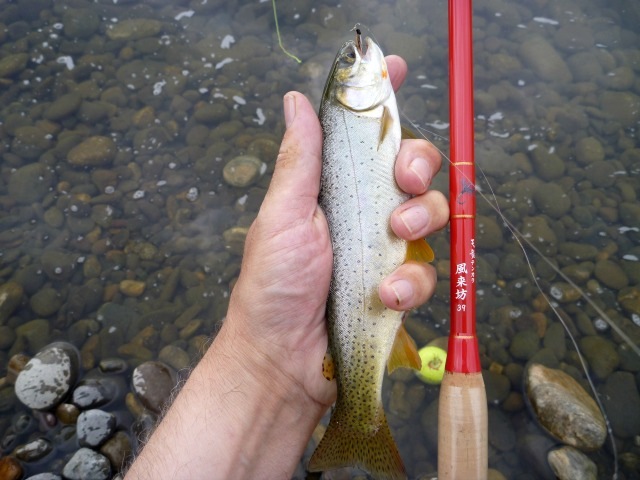
Tenryu Furaibo
It comes in a striking, bold almost fire-engine red finish – so it certainly makes a statement on-stream! Basically a slight squeeze on the handle is enough to flex and load these rods. That luxury feel and light-line performance carries an appropriately high price tag.
Tenkara Rod Co.
Switched-on USA-based startup with killer marketing and Search Engine Optimisation skills. Type in “tenkara rod” to Google and their site will appear above much longer-standing major players. I’ve fished their Sawtooth model and it felt pretty meaty and suited to casting fairly chunky lines. They hit the market with a bang following a successful Crowd-funding campaign and well-designed and optimised website. They’ve also been successful in actively seeking dealers that include coffee shops and other hangouts for US-tenkara’s generally younger demographic (compared to rod and reel fly fishers).
With affordable blanks finished in bold cosmetics, there is an appeal to the anything goes attitude offered by simplified, portable fly fishing kit (also a good match for mountain-biking/hiking/camping). There’s no real reason for Tenkara Rod Co. to investigate or represent the origins, culture or specific Japanese techniques of tenkara – and I expect they are entirely comfortable in the fixed line fly fishing genre. I’ll pick up on this theme again below.
Gamakatsu
This is a really interesting Japanese brand when considered next to other high-end super-technical rods designed for the light casting lines favoured by the most technical modern tenkara anglers. Gamakatsu take the completely opposite stance and make some incredibly high quality, very powerful, blanks that are the overwhelming first choice for tenkara anglers that come from a professional “Shokuryoshi” background (in other words folks who kill and process fish for a job). They are also favoured by extreme anglers – like Gamakatsu’s chief tenkara rod tester Kobayashi-san – who tackles huge migratory salmonids in terrifying white-water main rivers.
This is because, they are very strong and (for tenkara rods) very stiff – both characteristics that a survival “tool” rod should have. This stiffness is also a good match for horsehair lines that are often favoured by Shokuryoshi – for example two anglers who have grown up in that tradition that we know both favour Gamakatsu rods and horsehair casting lines (Hirata-san and Yamada-san). Their power is essential for quickly dragging a fish to shore to be dispatched and put in a creel – as well as for handling long (and sometimes deliberately water-logged) horse-hair lines. In the same way, the excellent build quality and design mean that such power can also be used when landing big fish in powerful currents (like this huge non-native brown trout caught by Kobayashi san in the summer of 2017).
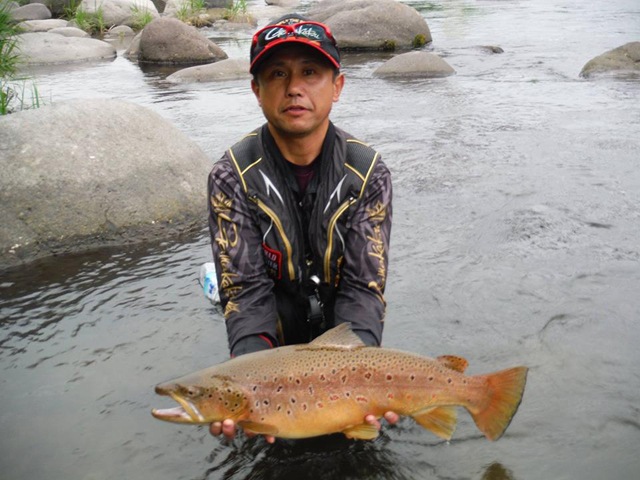
Gamakatsu tester Kobayashi-san with a huge brown trout caught on tenkara
Beware, a “stiff” rod does not automatically make a “strong” or “robust” rod – so Gamakatsu have spent a lot of money on their design and manufacture to get their formula right. On top of that, Gamakatsu rods are, when matched to the right line, great casting tools with every aspect of their intended application designed into them. So they are in no way “blunt instruments” (and yes they carry a very high price tag).
Zen Fly Fishing
It would be wrong of me to gloss over what a rough deal women receive in the fly fishing industry (as is depressingly common more generally in most areas of society). So, for Karin Miller to drive this company into prominence is a very difficult achievement. That drive may also come at the cost of recognising and appreciating the existing techniques and culture of the Japanese tenkara community. It is, though, important to note that this is no different from Tenkara Rod Co.’s stance or even the TFO/Patagonia stance.
Therefore, being as objective as I can be in relation to gender bias (either positive or negative), I commend the Zen Fly Fishing business for obtaining mandrels (formers) to produce tenkara blanks in the USA, but I don’t personally enjoy the rather “circus tricks” sensationalist vibe of sharks and bonefish caught on fixed line rods for the camera. Others may well do, and many will, of course, be the Zen customer base. I’m not sure where that leaves tenkara “the set of techniques” rather than tenkara “the variety of fixed line rod”.
Hopefully the future of tenkara and fixed-line fly fishing has room for both – though it would really help newcomers to be aware of the differences (especially if they are more drawn to one aspect than the other). Both tenkara (with its Japanese roots) and what could be called fixed line fly fishing are probably in a stage of “Awkward Adolescence” in the West just now. It may take a while for their identities and self-confidence to solidify.
Oni Rods (Types I, II and III)
Excellent balance, fuller-flex (though not as soft as Shimano or Tenryu), light-line casting rods with great precision and sensitivity. These rods are a great match for the high-level casting style of Masami Sakakibara (aka Tenkara-no-Oni; the demon/ogre of tenkara). As with any highly-tuned light graphite rods, it pays to protect the fine carbon walls of the blanks from accidental dings or damage.
Safe to say that we are not Coco and Masami Sakakibara’s favourite folks (!), so I hope that the fact I can be objectively complimentary about the rods should give you some confidence in the rest of these reviews. I would go so far as to suggest that all serious tenkara anglers should get round to owning an Oni I, II or III rod at some point, they are really very good at what they do. At the same time, it’s important to understand that each and every premium tenkara rod represents a unique set of compromises.

Oni Type III rod and Discover Tenkara syndicate streams trout
There is no single “perfect” tenkara rod – but there are individual rods that come pretty close to perfection for a specific application. Each application, will inevitably come with its own set of specific compromises. Strength versus weight, casting versus fish-playing and length versus balance are all examples of the trade-offs every rod must choose between. And don’t forget that all those trade-offs will also interact with each other.
One last point… I can’t comment on the Oni Zerosum Honryu rods as I’ve only seen them in their collapsed state and have not fished or cast with one yet. But, for light lines (the Type II can also be used with something a little heavier – maybe #4 level fluorocarbon), good balance and great casting experience – Oni Type I, II and III fit the bill.
Badger Tenkara / Tenkara Adventure Outfitters
Matt Sment and Mike Lutes set up Badger tenkara in 2014 with the aim to spread and support the positive experiences of fishing with tenkara-style rods in the USA. Actually, probably the best thing I could do is to reproduce their mission statement from the Badger site! It seems like the clarity of purpose you’d associate with an ex-US paratrooper like Matt definitely carries over into Badger’s business. But, rather than copy the whole thing, these couple of snippets tell you most of what you need to know:
“We encourage anglers who fish high gradient mountain streams using Badger rods to apply traditional Japanese techniques if they choose. We encourage anglers who fish on other types of water using Badger rods to fish techniques that suit their environments best. What is important to us is that you experience Tenkara style fishing equipment, and most importantly, that you have fun!”
N.B. Matt and Mike have Now sold on the business to TAO - Tenkara Adventure Outfitters who continue to sell the models of rods.

Badger Tenkara Bad Axe
The quote above is quite a lot different from the very polarising “Screw Japanese tenkara” or “If it’s not pure Japanese tenkara then you can go take a hike” hard-line positions of most brands. It’s one that leaves room for interest in tenkara and diverse fly fishing skills to develop, so that is certainly worth recognising.
And here’s the characteristics of the rods (and I know that the guys are actively listening to what the community might be looking for in new models too).
“Our rods are designed to offer a reasonable price point and ensure a performance standard that will appeal to a broad audience of customers, including novices and casual anglers… Our rods are a little heavier than some, because we make them as durable as we can. The flex profiles are easy to control for just about any angler who picks them up and suitable for just about any rigging choice.”
Sounds fair enough to me.
Tanuki
Luong Tam has a background in engineering with an entrepreneurial spirit (that includes working on the development of CD-ROM architecture back in the day). Originally from Vietnam, Luong has created the brand “Tanuki” with a strong sense of mischief and play. Luong is renowned for his colourful blanks and runs of rods with special edition handles. I only have experience of the Tanuki 375 and 425 (both in black) and the ones I bought were well-engineered rods (the 425 does require a heavy line to get the best out of it). Even though there is a strong flavour of flim-flam and PT-Barnum about his marketing, the products themselves come out very much on the higher specification range of Chinese rods.
The biggest elephant in the room is the important matter of how well a rod manufacturer knows the fishing techniques for which their rods are designed. This is noted as an essential requirement by expert builders of bamboo wazao right through to modern Japanese graphite rods. To know what to start with, what to aim for and also (critically) when you have got there requires fishing and casting techniques to be very deeply ingrained into the nerves and muscles. Without it, you need to rely on the tricky process of interpreting feedback from customers and selected testers (and how best to pick the right combination of factors in one rod).
From the exchanges and discussions on-line, you can see that Luong has a decent amount of catching up to do on the fishing technical side. Most likely because of this, there is a notable jump in performance when you pick up a decent Japanese-made rod. I’d also expect there to be a bigger role of chance in the production of “hits” versus “misses” for the same reason. Of course, we are all learning all the time, and that’s a good thing to embrace.
Nissin: Tenkara Rod Sweet Shop!
Probably one of the biggest tenkara rod ranges out there. The first Japanese rod brand that myself and JP tried out (after starting with TUSA rods) via the Nissin Fujiryu – and then later – Prospec 2-way models. Even their mid-range rods showed the big gulf in performance and balance between the regular western-designed blanks. Although it is significant, it is not just the high quality of carbon fibre produced in Japan that makes the difference for producers like Nissin. It is possible and relatively common, for example to buy Japanese carbon-fibre cloth and use it for rod manufacture in China.
Instead it is the almost “wine expert-like” ability of Japanese manufacturers to know which of the small number of expert carbon producers actually made/processed specific blanks just by having a close look at them. Again, a bit like Tenkara Bum, Nissin has such a large range that it is very difficult to suggest a single style that describes all their rods. They produce rods at multiple price-points, and the ones I’ve tried compared favourably to other rods retailing at similar values. Their range is so large, though, that I am nowhere near trying all their models (and that includes their absolute lowest-priced options).
Missing Brands & Patagonia
For the other brands that I’ve not covered yet, I mainly don’t have enough experience of them such as Dragontail or even Daiwa (beyond their 4 to 4.5m zoom which is a good rod or the infamous "Rinfu") to make a sensible comment. For some others, their characteristics are already captured by the rod brands in this article with whom they share a manufacturing plant. One exception that I’ll make is that, by consciously re-designing rod blanks to be capable of casting floating fly line/running line, the Patagonia rods marketed as Tenkara rods is a total double-edged sword.
On the one hand, the reach and dominance of their brand will inevitably bring more people into contact with the word “tenkara”. On the other, the experience that those newcomers have immediately negates the most effective and enjoyable parts of tenkara. The book is also a very poor introduction to the western techniques that it promotes (and is does not show any understanding of tenkara techniques).
This is a shame, because many of Patagonia’s other business choices and practices are extremely noble and carry a sense of social justice. They have also done an excellent job in covering the Valsesiana fly fishing tradition of North Western Italy. Don’t get me wrong, it is not just about the rod – it is how they have been designed to be used. I’m very fond of saying that you can fish “tenkara” tactics very well with a rod and reel if you know the typical range of Japanese techniques – here’s an example: https://www.discovertenkara.com/blog/fly-choice-in-focus-lesson-1/.
Tenkara Rod Anatomy
Like most other modern Japanese “fixed-line” (i.e. reel-less) rods, tenkara rods have no line-guides and are made to be neatly collapsible. Their telescopic design makes them incredibly portable and each rod basically boils down to 5 components (maybe 6 for “zoom” rods that lock at different fishing lengths). The raw basics are:
- Screw cap for the butt of the handle (can be good to have a drainage hole)
- Handle (typically cork or high density EVA)
- Blank
- “Lillian” (cord for attaching casting line to the rod tip – sometimes called “hebi-kuchi” (snake-mouth) in Japanese because it looks a bit like the tongue of a snake)
- End cap/plug (to stop the sections sliding out when you’re not fishing)
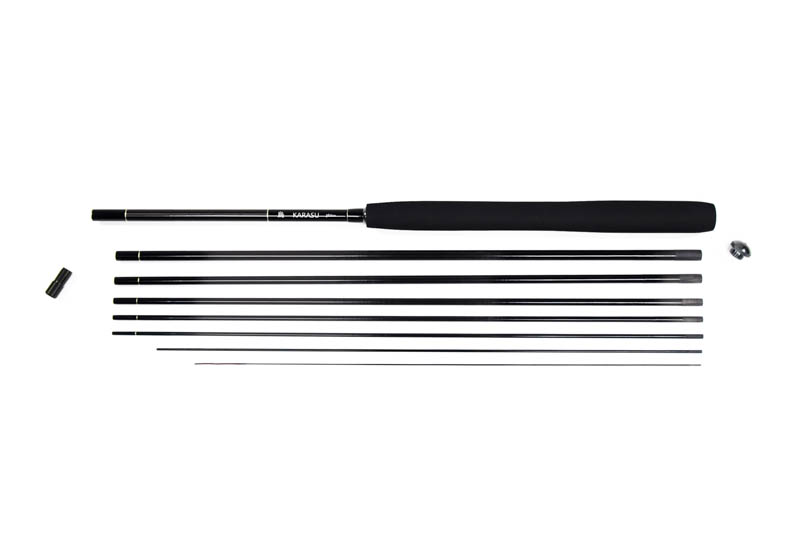
Karasu Tenkara Rod Components
Although these components are minimal and apparently simple, it is worth knowing some of the details that can make a huge difference to the feel and performance of a rod. Of course the end plug is pretty self-explanatory (it is basically a snugly-fitting bung at the open end of the blank – though you can get special “universal” ones that strap on to the outside of your rod if you lose the original plug). The other parts deserve a bit more detail:
Tenkara Rod Blanks
First of all, the blank is, of course, completely fundamental to how a rod functions and feels. There is nothing that you can do to make a bad blank into a good rod. In terms of a check list for manufacturing quality, you can check out our set of diagnostics for rod blanks by Clicking this Link.
While it is totally outside the scope of this article (and stretching the limits of my own knowledge) to do a complete rundown on the materials science of carbon-fibre rod blanks, it is useful to know a few things. First of all, the often talked about “modulus” of carbon rods refers to something called Young’s modulus and it is basically describes how much the material bends when you apply a certain force to it. In its formal definition, Young’s modulus equals Stress (the amount of force applied) divided by Strain (how much the material deforms under that force).
The advantage of carbon fibre (when stabilised in an epoxy resin) is that it can be made to be exceptionally stiff relative to its weight. The higher the modulus, the stiffer the material BUT – it is not true to say that higher modulus = universally better. As you increase modulus, you also tend to make it more brittle. Secondly, going right back to the eight different types of bamboo used in Wazao, there are advantages in controlling how flexible different parts of the rod are (by both taper and material properties).
By careful selection of binding resins, heat/pressure treatment, the arrangement/weave-pattern of fibres (and also the inclusion of additional materials such as glass fibres), expert rod manufacturers can select the ideal combinations of lightness, toughness, and flexibility for each section of their rod blank. When combined with taper, this is what fundamentally controls the fishing and casting characteristics of each blank.
Key point – compared to many other industrial applications the “modulus” of both fly rod and tenkara carbon fibre blanks would not be classed as in the “high modulus” range – because that has completely the wrong qualities! But you can easily see how there is a marketing appeal to being able to say that your rods are “high” modulus (or even “higher modulus than our competitors”). Beware the flim-flam, it’s really difficult to sift out from the genuinely useful technical details.
Before any coating with lacquer (if the rod is finished in that way), some blanks will have their outer surface sanded down to try to even out any un-even parts. Depending on how well this is done, it is possible to accidentally introduce invisible weaknesses to the blank. Some manufacturers will produce a thicker-walled blank to allow for sanding down to create a uniform appearance and feel to the finished rod. In contrast, having a “natural” or un-sanded blank is extremely revealing in terms of the quality and consistency of manufacturing.
The bottom line is, you pay more for high-quality construction and finishing done to produce lighter, thinner-walled blanks that are free from weak spots and inconsistencies. The importance of that lightness with the right stiffness is magnified for rods that are a.) Much longer than most fly rods and b.) Fished without a reel that would shift the centre of gravity towards the rod butt.
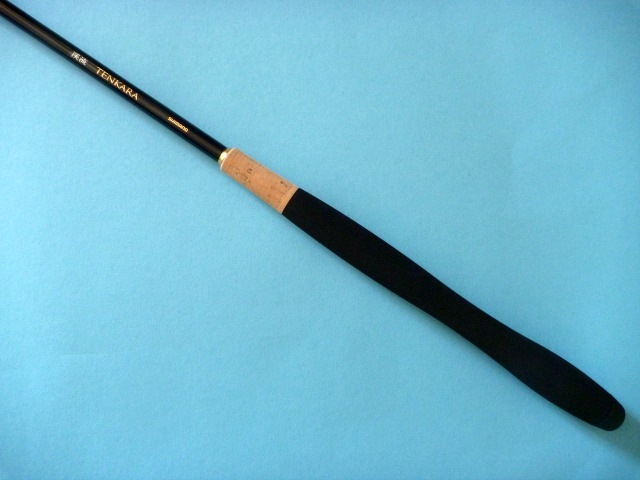
Dr Ishigaki’s Shimano 34-38 ZX Keiryu Tenkara Rod (an example of a hollow-tipped rod)
The last points I’ll note about tenkara rod blanks is that the final tip section can be made in a number of ways. They are sometimes solid and sometimes hollow – depending on the required flex. There also tends to be broadly typical ranges of tip diameters in Japanese tenkara rods (versus, bait fishing for micro species for instance). One of the first questions beyond flex characteristics that detail-orientated folks like Kura-san will ask is the tip diameter in millimetres. Sometimes this helps to place rods in a certain context. For instance the infamous “Rinfu” has an extremely fine tip by the standards of most tenkara rods (particularly those longer than 4-m).
The Crazy Importance of Handles
The full handle (including the cap) of a tenkara rod has a much more major influence on the experience of the completed rod than you might think. Of course, the combined weight of the assembled handle/rod cap influence the centre of gravity (more on that in the next section). But on top of that, the combination of density, texture and overall stiffness of the handle are absolutely critical. One lesson learned by the experimental tenkara anglers who try out rods from different forms of Japanese fixed-line fishing is that they could ruin a great blank by getting the handle wrong. That’s worth thinking about… you could have the best tenkara blank in the world and then spoil it by fitting an unsuitable handle.
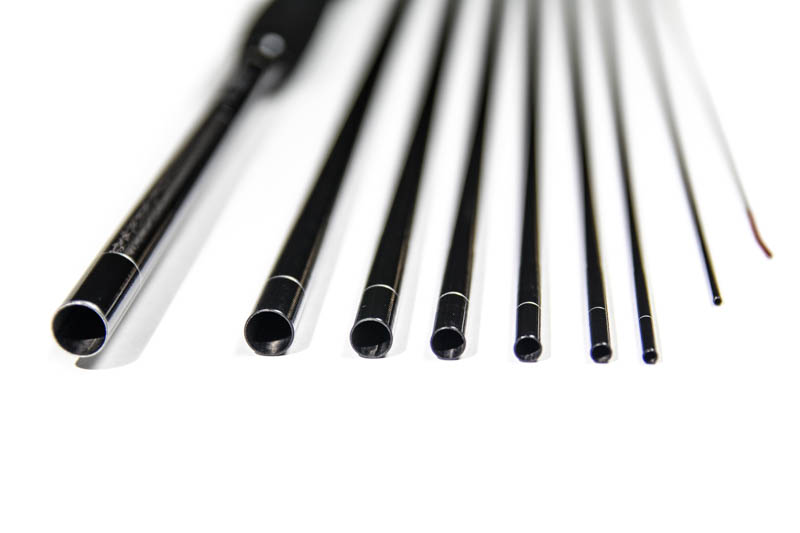
Karasu blank detail
Another thing that was brought home to us when testing the Karasu was how much difference in responsiveness and sensitivity there is between great high-density EVA and cork. With a responsive blank, it is incredible how much more feedback is transmitted to your hand by high quality EVA. In fact many of our customers have been puzzled by trying to find a “clicking rod joint”, only to discover that they are feeling the slack between the lillian on their casting line snapping tight during their casting stroke (or even the lillian ticking against the rod tip from time to time).
Lillian
As well as the cute hebikuchi/snake-tongue story, there are just a couple of things worth noting about the lillian at the end of the rod. The strange name (for a language that has no “L” sound) is said to come from Lily-yarn – a product patented in Kyoto in 1923 (both hebikuchi and lily-yarn are mentioned in Kevin Kelleher’s book “Tenkara, Radically Simple Ultralight Fly Fishing”).
In practical terms, for rods with tips that are fine enough to fit inside the hollow core of the braided yarn, it is important that those diameters are a close match. When heat-sealed onto the rod tip, it is important that the joint can still be reversed out of the next section of the rod for cleaning and drying. For attaching braid “transition loops” by means of a girth hitch or crow hitch knot, you’ll need to put a half hitch stopper knot in the end of your lillian. Otherwise the braid can slip off the end when you hook a fish! Alternatively, if you use a simple sliding arbour knot (and a level line which is passed through that sliding loop twice), there is no need to half hitch the lillian.
Tenkara rods are designed to cast lines that are so much lighter than fly line – and adding even the lightest line guides completely changes the casting action. They will droop very visibly and the rate at which a rod can recover to a straight position is dramatically slowed (I know folks who have tried this). So, when you have a very sensitive and finely-balanced rod that is capable of casting lines that are even considered light by tenkara standards, why would you want to stick a metal swivel to the tip? It dulls the recovery of the tip and line-twist is not a problem that happens during casting and fishing anyway. For that reason, I am not a fan of lillians that end in a permanently-attached swivel.
Tenkara Rod Action Guide
Rod “power” is very different from rod “action” – but the two are often confused by both manufacturers and customers alike. Rod action indicates where the flex noticeably begins in a rod blank and is defined by the Japanese as a proportion. The easiest way to understand this is to look at a diagram, labelled with some common action ratings.
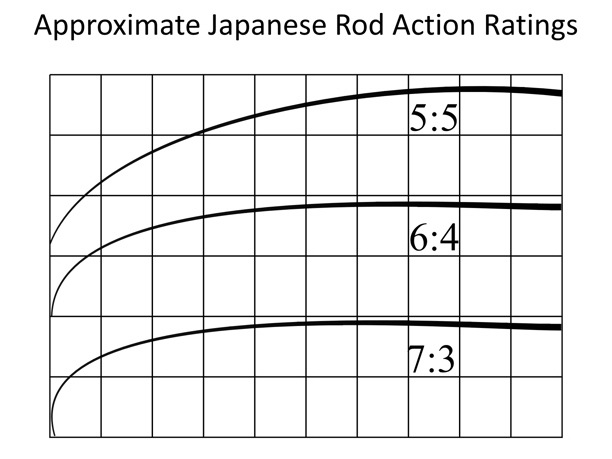
Tenkara rods tend to have actions that are rated between 5:5 and 7:3. There are much rarer examples of the ultra-tip-actioned 8:2 – where the majority of the bend is supposed to start in the final 20% of the tip-end of the rod. But the real take-home message is that you can have a rod that requires very little force (or a really large amount of force) to make it bend…the action tells you nothing about that force. Action simply tells you something about the shape of the rod when you make it bend.
Instead, you’d need something like the “Common Cents” system to tell you a little bit about the amount of force it takes to bend a rod. Developed and spread by retired chemist and gemologist Dr W. William Hanneman. http://www.common-cents.info/part1.pdf, it gives some standardisation to the stiffness of a rod. Probably the most useful result of Hanneman’s test is the “Pennies” rating that indicates relative stiffness or what you can think of as rod “power”. Starting with a horizontal rod anchored at the handle, this is the number of US pennies (one cent pieces minted after 1996) needed to deflect the rod tip by a distance that equals one-third of the total rod length. Again, this is way easier to imagine and understand by looking at a diagram.
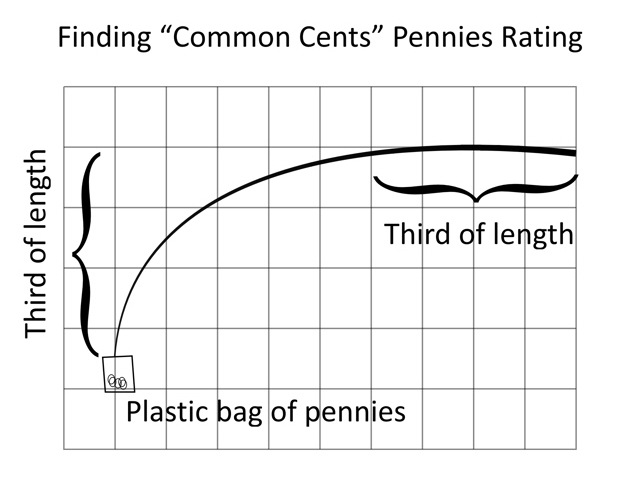
Although every aspect of what it actually feels like to you, personally, is highly subjective; the combination of rod action and its penny rating can give you at least a starting point. Reviewers like the prolific Tom Davis at Teton Tenkara have amassed a really useful and interesting set of measurements (including penny ratings) for a large number of tenkara rods now. Which brings me on to…
Guidance on testing rods/help interpreting tests
Again, if you want to run through some simple tests yourself, our free guide can be downloaded on this link: https://gumroad.com/products/rHqE (just enter “0” into the price box and then click “I want this”. But, more often than not, you’ll be faced with reading information that someone else has gathered on a rod that you might be interested in. Let’s get one thing out of the way. It is stating the obvious, but there really is no substitute for being able to pick up and fish with a rod yourself.
With that said, in the online shopping age, you’re going to have to get pretty good at detective work and take the odd gamble. We already covered rod stiffness and rod action and the best thing you can do is to find out what those figures are for rods you already own. That will help you to have a reference benchmark for some of the other rods that are tested – but that you’ve not had the chance to try.
Here’s where it gets a lot stickier for me…
There are some really great attempts to standardise what a rod’s “balance” and perceived weight actually feel like during fishing. One of the most interesting is the Rod “moment” which is calculated by measuring the distance from the butt cap of a rod to its centre of gravity and then multiplying by the rod’s total weight. Gamakatsu actually lists this figure for its rods. Again, thanks to the champion detective David Walker for pointing out Gamakatsu’s practice on that.
This Rod Moment measure is different from the physics calculation for “Moment of Inertia” – which gives a sense of how much effort is needed to rotate a rod along its long axis (and which we don’t need to mention further because it quickly gets confusing). Instead, it is more useful to say that the rod moment tries to give you some sense of how effortful it feels to swing the rod in a casting situation.
But even rod moment as calculated by Gamakatsu is difficult to translate into fishing experience. For fishing – the cast happens often, but only lasts a fraction of a second…whereas even fishing your fly for a 3 or 4 second “drift” takes up much more of your total fishing day. In fact, by definition, that “fishing drift position” happens just as many times as the actual cast – only it is almost always much longer!
The question, maybe, then is whether centre of gravity and/or the perceived weight after counter-balancing is more important? What I mean is, if you put a heavier handle (just like Shigeo Yamada and other old-school Shokuryoshi) on a rod to counter-balance it; the rod moment would suggest this could be a pointless exercise. Although the counterbalance effect will reduce the distance from the rod butt to the centre of gravity, the increased total weight will act to keep the final figure similar to what you started with (although that is complicated by weight being a cubic function and length being, well, linear).
Having to cast that heavier total weight should make it feel more effortful, but in practice we’ve often found that not to be the case. As an example, one of the previous rods we worked on was the Hakusan (a zoom rod), which was a fair bit heavier than the TUSA Sato (another zoom rod). Yet the longer, heavier handle that was fitted – and the taper of the blank – actually made the Hakusan feel much lighter in the hand and also when casting. Weird.
But even that is not the end of the story. For instance, the act of casting is not just “swinging” (rotating through a casting arc) a completely rigid rod. Instead, casting involves putting a bend into a flexible rod that then “recovers”. So the amount of effort and the distance of movement required to produce that bend – or “load” a rod – will vary with its flex profile as well as “rod moment” or overall weight. Your ability to put a bend into a rod using the inertia of the casting line varies tremendously from other anglers according to your technique. The “slower” (i.e. more full-flex, closer to 5:5) the action of your rod, the further the blank will move through space – and the more of the blank will be involved in that flexing/straightening process.
On the other hand, for a faster actioned rod, that arc/distance of movement of the rod will be less – but depending on what the “pennies” rating, it will feel more/less subtle and responsive to the casting line (which will either be light or heavy depending on how stiff that rod is…and so it goes on). Overall, the action and the power – combined with the overall rod-length – introduces yet more variables in the form of not only your casting ability – but the casting ability of the rod-tester/reviewer too. Gaining and staying at the cutting edge of tenkara casting and fishing techniques is incredibly demanding.
In modern tenkara, there is a move towards increasingly more refined techniques when fishing in rivers with very high angler traffic (the alternative is to be learn to hike and climb for days into wilderness areas, living off the land to find lower traffic streams). As a result, the pressure for rods to achieve exceptional performance with ever lighter casting lines is INTENSE. Consequently, for the highly technical catch and release anglers there is a move to increasingly delicate rods to meet those demands. That gives quite a strong contrast to the stiffer rods of professional Shokuryoshi. Those are more often designed for rapid catch and kill in remote areas (where fish do not have multiple opportunities to refine their instinctive responses to anglers and their flies).
With all of this, beyond what can be measured in a relatively standard way and reported as figures, probably the most important thing is a purely qualitative description of how it all FEELS. Rod reviewers and testers deserve a lot of gratitude from us as members of the tenkara community. What we are asking of them is basically impossible. We want to know what we will feel like and how that rod will gel with or clash with our own skills and biomechanics.
As all of us become more and more experienced and educated in tenkara’s techniques, this can only help that collaboration between buyers and reviewers.
I think the future is very bright.
Paul
If you found something new and useful in this article, please share the link to this page and let other folks in on the secret too.

